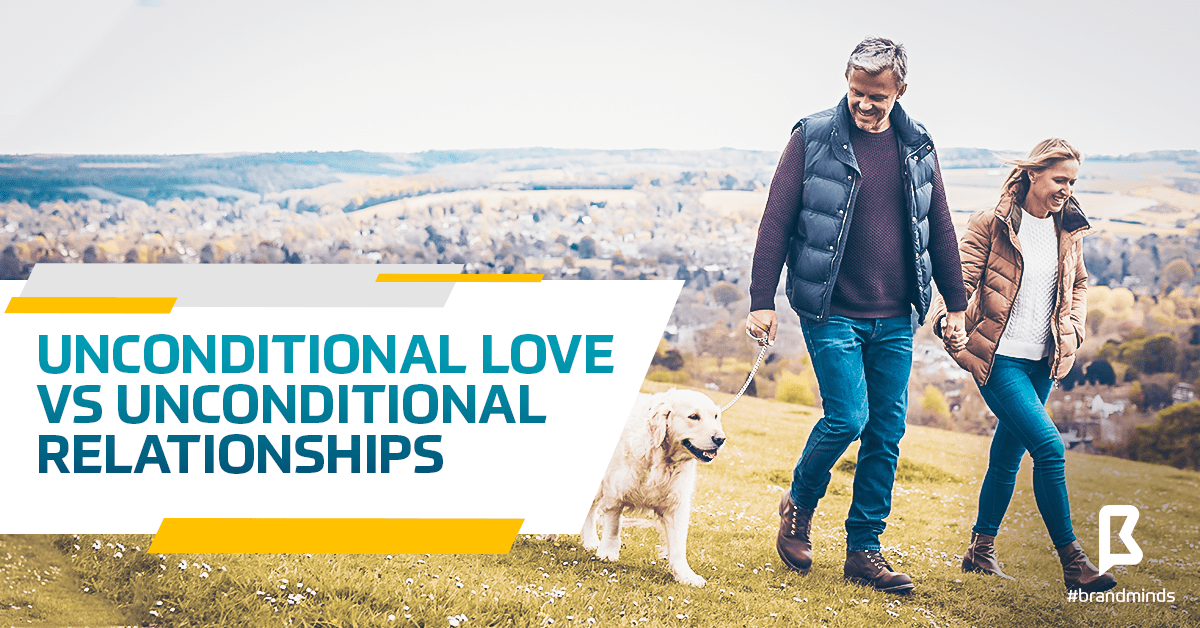How To Market To Women Customers – 4 Recommendations
As a marketer, your job is to find the best way to connect with your customers. Are you marketing to women customers? Then this article is for you.
Bridget Brennan is the CEO of Female Factor, a firm helping businesses develop marketing and sales strategies for women consumers. In her books, Why She Buys and Winning Her Business, she provides valuable insights into marketing and selling to women.
Before I go into Bridget’s insights and recommendations, I invite you to direct your attention to the following statistics on the purchasing power of women via girlpowermarketing.com:
- Women control over $20 trillion in worldwide spending;
- 74.9% of women identified themselves as the primary shoppers for their households;
- In 61% of all consumer electronics purchases, a woman either initiated the purchase or was involved in the purchase process.

girlpowermarketing.com
Here are two insights that every marketer should take into account when building marketing campaigns focused on women:
1. Women are “multiple markets in one”
What does that mean? To understand this, let’s think about Christmas time. Who buys the presents for everyone in the house and for the members of the extended family? The lady of the house. She buys presents for her children, her husband, his colleagues at the office, her elderly parents and in-laws, cousins and friends.
Of course, this situation is not limited to celebrations spending. Women buy on behalf of the people who live in their households on a regular basis.
Women influence various industries and marketers should take that into account.
2. Don’t rely on the name that’s on the credit card
Just because the name on the credit card which pays for purchases is a man’s name, refrain from jumping to the conclusion that he is making the buying decisions.
It’s still the woman who makes the buying decision.
Here are Bridget’s recommendations on how to market to women:
1. Study women as you would a foreign market
Women think differently and they experience life in a different way than men.
Discover their desires and goals, their fears and behaviours.
What are they fighting for and what are they fighting with. Put yourself in their shoes.
Learn more: 3 Brands In Crisis in 2018: KFC, Nike, Victoria’s Secret
Victoria’s Secret is a brand which hasn’t put itself in women’s shoes (or lingerie) in a very long time. It might never have done that this in the first place.
The glamorous women’s lingerie brand was founded in 1977 and it is still marketing like it’s 1977. Retail analyst Paul Lejuez says women don’t want to be viewed as stereotypical sexy supermodels buying lingerie just to impress men.
That’s why Victoria’s Secret has seen fierce competition in recent years from brands such as ThirdLove, Aerie and Savage x Feinty by Rihanna which design their products to meet women’s needs of comfort, beauty and sexiness.
2. Track demographics changes across generations
Life has changed a lot for women. There are many differences between Baby Boomers women, Gen Z women and Millennial women. They have different aspirations for their personal and professional lives. They have different outlooks on motherhood, beauty, marriage and relationships.
There is a female culture and it should be studied by marketers with the same focus that studying a foreign market requires. Cultural differences dictate language, behaviours and perceptions.
Bridget Brennan
Here are 4 interesting insights focused on women according to reports conducted by PwC:
- Women have fewer children;
- Women have children later in life;
- Women are the main caretakers and breadwinners in many households;
- Women are a growing purchasing power: 70% of household budgets in the G7 are controlled by women, globally 85% of consumer purchases are made by women which is equivalent to a worldwide spend of $20 trillion.
Read more about the latest demographic and social changes: PwC: 5 MegaTrends Affecting Your Business in 2019
3. Stay clear of pink unless you are raising money for the breast cancer cause
The colour pink has been synonymous with female nature for a very long time because manufacturers and designers didn’t know any better.
To illustrate an entire gender with just one colour is simply not good enough and frankly offensive. Women struggle with life’s hardships just like men. Unlike men, women juggle with many roles on a daily basis and manage to come out on top.
Women are not delicate princesses dressed in pink gowns and they certainly don’t see themselves as that. They are not powerless and don’t wait for men to come and rescue them.
4. Hire women
Research reports show organisations with women in management are more innovative as the share of female managers increases above 20%.
Reports conducted by The Anita Borg Institute for Women and Technology show that teams which included at least one woman had a collectively higher IQ than teams that had just men.
If your company is looking to market to women, hire women in your product design and development team to represent your customers.
Learn how to attract and retain female talent in the workplace: LinkedIn Report: 4 Trends Transforming The Workplace in 2019
Join the Conversation
We’d love to hear what you have to say.
Get in touch with us on Facebook Group and Twitter.
The Health and Wellness Industry Is Now Worth $4.2 trillion
According to the Global Wellness Institute, the global health and wellness industry is now worth $4.2 trillion.
The industry has been growing with 12.8% between 2015 and 2017 and represents 5.3% of global economic output.
The Health and Wellness industry encompasses all activities which promote physical and mental wellbeing: from yoga to healthy eating, personal care and beauty, nutrition and weight-loss, meditation, spa retreats, workplace wellness and wellness tourism.
Once upon a time, our contact with wellness was occasional: we went to the gym or got a massage. But this is changing fast: a wellness mindset is starting to permeate the global consumer consciousness, affecting people’s daily decision-making – whether food purchases, a focus on mental wellness and reducing stress, incorporating movement into daily life, environmental consciousness, or their yearning for connection and happiness. Wellness, for more people, is evolving from rarely to daily, from episodic to essential, from a luxury to a dominant lifestyle value. And that profound shift is driving powerful growth.
Katherine Johnston, senior research fellow, GWI
Read more: The Health and Fitness Industry Is Estimated To Reach $100 Billion in 2019
What is driving the growth of the health and wellness industry?
Here are 4 factors driving the growth of the Health and Wellness industry:
1. The clean eating trend – free-from and organic foods
Consumers are increasingly focused on living longer and healthier. Healthy living starts with healthy eating.
The consumer’s preferences have shifted towards eating more natural, free from additives or preservatives, organic food. Today eating clean means eating a diet made of gluten-free, dairy-free, non-refined carbs, sugar-free food.
Millions of people worldwide are suffering from the celiac disease which drives the demand for gluten-free/wheat free food market.
The global gluten-free retail market is estimated to grow to $12.5billion by 2024 at a rate of 9.5% from 2017.
According to Statista, Italy is the leading gluten-free and probiotics market in Europe.

image source: gminsights.com
2. Wearable devices and virtual assistants usher in the personalization of health and wellness
Demand has increased for all kinds of health-focused wearables: smartwatches, health and fitness trackers, heart rate monitors, apps which support the emotional and mental health of users and virtual assistants.
Learn more: This App Supports Your Employee’s Emotional Wellness
A 2018 Pricewaterhouse Coopers (PwC) report has found that almost half (49%) the people in the United States own a wearable device.
Health conscious consumers expect their wearable devices to help them live longer (70%), maintain a healthy weight (63%) and pay less in insurance premium (62%).
Wearables Market is expected to grow to $27 Billion by 2022.

image source: CSS Insights
3. Wellness tourism is growing
The wellness travel market is worth $639 billion and has been growing at a rate of 6.5% from 2015-2017. The growth rate for tourism overall is 3.2% so wellness travelling is growing twice as faster.
Wellness trips account for 17% of total tourism expenditures. Wellness seekers travel to Asia-Pacific, Latin America-Caribbean, Middle East-North Africa, and Sub-Saharan Africa to get in shape and return home relaxed and ready to go.
Over the past five years, Asia is the #1 destination of wellness travellers, attracting both trips and revenues.
In the last two years, trips to Asia grew by 33% to 258 million annually. China and India rank #1 and #2 for growth worldwide, adding over 12 million and 17 million wellness trips respectively from 2015-2017.

4. Amazon – the consumers’ preferred channel for nutritional supplements and skincare
The 2018 Beauty, Health & Wellness Survey conducted by LEK highlights the latest trends and offers insights into consumer interest in nutritional supplements and skincare.
Here are the survey’s findings:
- Average consumer spend – more than $100 per month — totalling $1,300 a year on nutritional supplements such as vitamins, minerals, herbal and sports nutrition products, and skincare products such as creams, lotions and sunscreens;
- Gen Xers and boomers spend on nutritional supplements, while millennials spend on skincare;
- Personalization is trending also with nutritional supplements and skincare – 39% of Millennials and 36% of Gen Xers are highly interested in receiving personalized programs; these programs consist of selecting nutritional supplements tailored to their individual health needs or a custom skin care program augmented by a beauty box delivery each month;
- Amazon has established itself as the No. 1 preferred channel for nutritional supplements and No. 2 preferred channel for skincare.
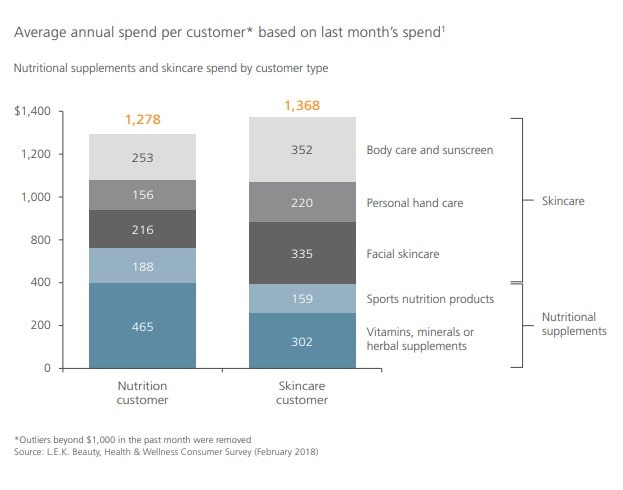
image source: lek.com
If you enjoyed my article and would like to discover information on other growing industries, I invite you to read the previous materials on pet-food, gaming and health & fitness.
Join the Conversation
We’d love to hear what you have to say.
Get in touch with us on Facebook Group and Twitter.
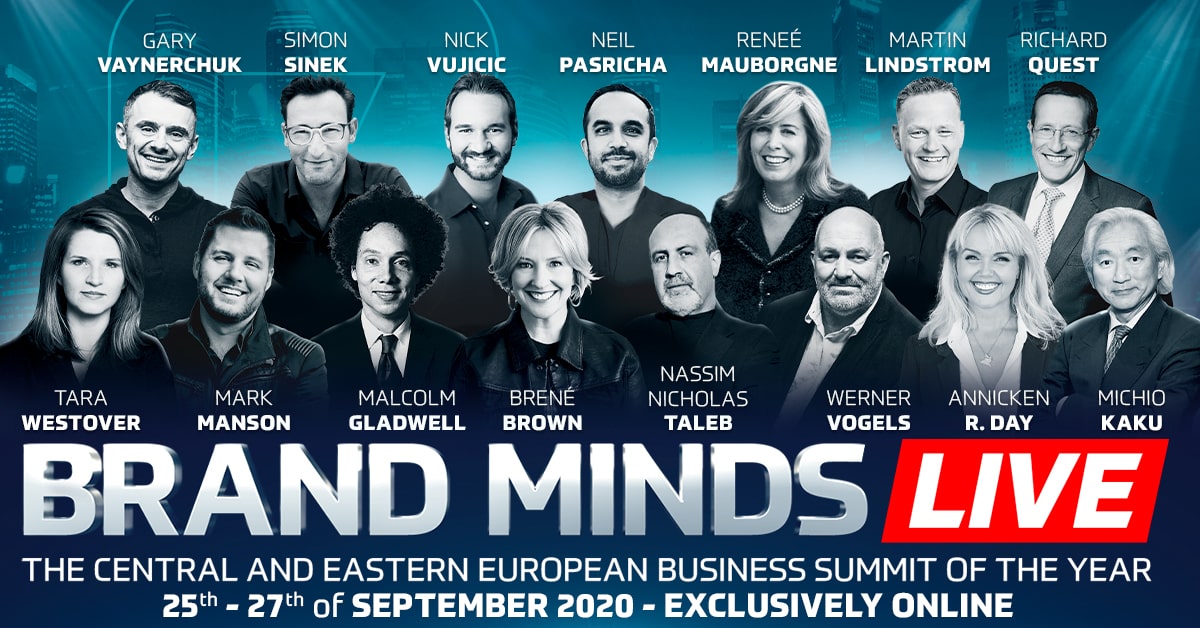
This App Supports Your Employee’s Emotional Wellness

Is your employees’ emotional wellness a topic of interest in your organisation? Read on to learn of an app which supports the emotional wellness of your employees.
According to the World Health Organization, mental disorders affect one in four people.
Experts estimate around 450 million people currently suffer from such conditions, placing mental disorders among the leading causes of ill-health and disability worldwide.
People suffering from mental disorders are difficult to diagnose and treat because of the negative perceptions about mental illnesses or mental conditions: stigma, shame, discrimination.
Learn more: Along the Road to Great Mental Health: Debunking the Myths & Stigma
While various studies have found mobile phones can have a negative impact on our physical and mental health, we can also find ways to use them to our benefit.
Our mobiles phones act as our windows into the world. But just as our mobile phones provide us with the latest political news, fashion trends or cake recipes, they also provide us with important insights into our emotional health.

A world where mental health is never an obstacle.
The team behind Ginger built the app on this very idea: that our interactions with our mobile phones can be turned into data which could supply an accurate and update emotional profile.

What is Ginger.io?
Ginger.io is an app which offers professional coaching services to support employees’ emotional wellness.
Mission
At the moment of need, we provide stigma-free access to high-quality coaches, clinicians and content. We’re coupling data science and virtual care to reinvent how the world gets mental health support.
About Ginger.io:
- It is a behavioural analytics platform which turns mobile data into health insights;
- The app is available to individuals whose employer or health plan offers Ginger as a benefit;
- It offers emotional-health coaching and therapy via chat, teletherapy and telepsychiatry via video;
- Ginger members can chat directly with a coach within the app at any time of day, 365 days a year;
- Ginger coaches are licensed therapists and certified psychologists; their expertise is focused on stress reduction, motivation, and human behaviour;
- With the help of the app’s coaches, members identify distorted thoughts, change problematic behaviours, tolerate painful emotions, successfully manage effects.
Benefits:
- On-demand 24/7 emotional support: Ginger members have immediate access to video sessions with therapists and psychiatrists;
- AI technology: AI technology helps the app’s clinical team reach out at times that are most helpful;
- Higher engaging rates than EAPs (Employee Assistance Programme): 8-30% employees engage with the app while EAPs see only 0-3% engagement rates at the same companies;
- Treatments: emotional-health coaching, mindfulness, cognitive behavioural therapy, and talk therapy;
- Alerts: the app provides alerts when user behaviour deviates from the norm.
Join the Conversation
We’d love to hear what you have to say.
Get in touch with us on Facebook Group and Twitter.
9 Signs You Were Raised By Toxic Parents
Do you have a good relationship with your parents? Did you have a healthy childhood? Do you feel you have unresolved issues or feelings which go back to that time in your life? Do you have difficulties loving yourself or connecting with other people?
You may have been raised by toxic parents.

Here are 9 signs you were raised by toxic parents:
1. They used threats to maintain your obedience
Toxic parents don’t expect love from their children, they expect obedience. If this sentence is confusing to you, let me put it this way: to toxic parents obedience is love. They believe children who follow the rules established by their parents are good children. And so they are deserving of their parents’ love. The parents will use threats to control their children and keep them obedient.
If you disobey me, there’s the door, show yourself out!
If you marry her/him, you will hurt me deeply and you will never see us again!
If you leave me, I will disown you!
2. They drew unfavourable comparisons
Why can’t you be more like Jean? Look how beautifully she draws!
Your parents let you know early in your childhood that you were not skilled enough, that there were other children better than you.
You learned quickly that to receive your parents’ love and attention, you had to compete with other children and win. Spelling bees, dancing and singing, drawing, basketball, making cookies – you name it.
3. They physically punished you
It wasn’t uncommon for your parents to give you one quick slap on the wrist or yank at your ear when you did something wrong or made a mistake. Every time it happened, you became more afraid of your parents. Fear and love cannot coexist.

4. They didn’t express love – neither to you nor to each other
Your parents believed that showing love is a sign of weakness. So they never told you they loved you, caressed or embraced you.
They didn’t want to raise a weak boy or a spoiled girl. They believed it was a good way to toughen you up so that you were prepared to face a dangerous world.
5. They told you you were bad, worthless or couldn’t do anything right and criticized everything you did
It seemed that no matter what you did, it was never good enough for them. The concept of learning to improve one’s skills or talents was unknown to them. You were never going to become better at anything. No matter how hard you tried, you were just bad.
6. They used guilt and/or shame to control you
Ever since you moved out, it’s been hard for me. I feel so lonely and out of place. Are you going to visit me soon? You never call to see how I am, don’t you care? I sacrificed everything to give you a good education and this is the thanks I get?
Sound familiar?

7. They put their desires before yours
Did you follow a career path that your parents had chosen for you although you hated it? They never asked what you wanted to do with your life. Or when they did ask, they didn’t care because they knew better. Having a doctor for a son is so much better than a painter or an actor or a DJ. It reflected positively on them even if it didn’t make you happy.
8. They tell you you are nothing without their help and support
You are all grown up now and they are still treating you as a child. They reject you standing on your own two feet, being independent and responsible. They never miss an opportunity to undermine your self confidence and make you feel powerless.
9. They make you feel like you know nothing
Parents do know more than their children. But that changes when their children become adults. It seems your parents liked this feeling of superiority so much that they are still looking for ways to put you down so they can feel superior.
What makes toxic parents ….toxic?
There are various causes of toxic behaviour. Your parents may be repeating parenting patterns that they experienced when they were growing up.
They behave in the same way their parents behaved. Unfortunately they don’t have the required level of self-awareness, knowledge, skill development or desire to change those dysfunctional patterns.
They don’t realize their behaviour is hurtful and detrimental to the mental health of their children.
They would often say My parents did the same with me and I turned out just fine!

There’s life after a toxic childhood
Acknowledging your parents’ toxic behaviour is the first step towards healing.
The second step is to seek out professional help and begin the journey of self-recovery and self-love.
The circle of toxic parenting can end with you should you decide upon it. With help and support, you can become a better parent to your children.
Remember – you are not your parents.
Join the Conversation
We’d love to hear what you have to say.
Get in touch with us on Facebook Group and Twitter.
Briac Barthes – Driving Change Through Social Entrepreneurship

Briac Barthes is co-founder and CEO at hiLyte, a company which brings clean and affordable energy to all through its innovative solution – the Iron Battery.

LinkedIn.com
In his LinkedIn resume, Briac characterizes himself as being adventurous and having a strong-minded personality.
Social entrepreneurship provided him with a purpose and a challenge – that of showing the world it’s possible to do good and make money at the same time.
I contacted Briac and invited him to tell us a little bit about himself and his entrepreneurial journey.
1. In recent years, your professional career has been driven by social entrepreneurship. When did you decide to leave your home and dedicate your time and energy to social projects?
During my studies, I made a gap year and I went volunteering in Tanzania.
I felt that I was useless, and slowly I started learning Swahili and trying projects. After some time, I started a microcredit program with young people living in the street, and the day they told me that 3 of them could rent a home together and not live in the street anymore, I felt something amazing.
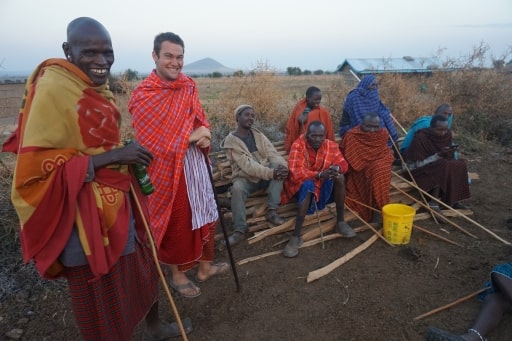
Briac Barthes in Tanzania/simplement.pro
I decided that my next job would be to enable people who are willing to get out of poverty to do it themselves. That was in 2014. Then I came back to Switzerland, finished my studies, and started working for an event where I built my network in social entrepreneurship.
In April 2017, I needed more adventure, and to have my own project instead of helping others working on their project. So I quit my job, and I went back to Tanzania to talk to as many people as possible and discover what are their needs, and how I could build a company that helps those people.
When I talked to people and felt at what point I could change their lives with my business, then I knew I was on the right track and started working a lot for hilyte. At that time the technology was still too young so I had the first experience of entrepreneurship in Africa starting a drying tomato plant for The Ketchup Project. And when the plant got certified, I came full time on hiLyte.
2. What challenges have you encountered while developing the Iron Battery?
The first challenge we had was power.
We had a technology that was interesting but was not powerful enough and we had to work a lot on improving it.
At the same time, the technology was coming out of Berkeley, and they had patented it. So we had an agreement with them to keep on working on it for a year, but we had to decide at the end of the year if we would protect it and where.
We didn’t know anything about IP at the time, so we met a lot of experts in the field who gave us a lot of insights, but none of them told us what we should do. The University was putting pressure on us, we had no money, and we heard that a big company was also trying to get the patent.
We finally could discuss directly with the other company, see that they were not the ones putting pressure on us. So we could take a decision just ourselves, and we decided that in Africa it is way too difficult to enforce IP. Therefore having a patent is not the best way to protect our business in the market we are working. Now the patent came into the public space, we have some trade secret on the technology and nobody can put a patent on top of the one that is now public.
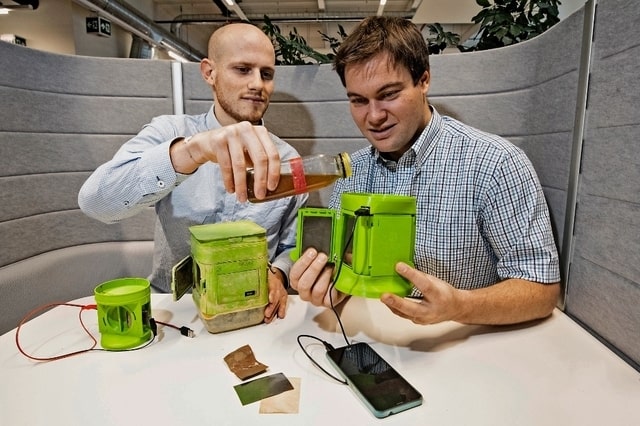
Briac Barthes and David Lambelet, co-founders of hiLyte showing how the Iron Battery is working/tdg.ch
Another big challenge was to position ourselves as a real company.
As we want to have an impact, a lot of people were seeing us an NGO who wanted to change the world, to help people, but not as a company. At each competition we were losing, we took feedback and improved the presentation.
In the beginning, we were talking a lot about the technology and the impact (what was important to us). Slowly we started talking more about the business model, about strategy, about value proposition, simplifying how we were showing the product so that anybody could understand our presentation…
In June 2018 we were selected as Mass Challenge finalists, and during the 4 months of acceleration, we presented many times. That enabled us to have a good pitch that people would like and understand. We could directly see the impact as the questions we were asked after the pitch completely changed. We won the silver place at Mass Challenge and then started winning different competitions. People had understood how our company can not only have an impact but also make money.
The next challenge was to raise money.
Even though many people believe in our business model, in our company, we needed some people to give us the money to start production and show that we can really make money. But in our Swiss network, most people don’t understand that people in Africa do have money and that yes they will pay for what we offer. Some investors have shown interest, but they all wanted to see the first sales, and we needed money to start these first sales. Therefore we launched the crowdfunding. We hired someone who took care of all the crowdfunding, starting from the preparation 3 months before the actual crowdfunding. He enabled us to raise 50 000 CHF, which we are now using to prepare for the pilot sales. And this crowdfunding also gave us much more exposure, and now more and more investors come to us by themselves.
3. Share with us your vision of the future.
I believe in a future that puts humankind and nature back to the centre of the world.
We have been separating our lives into two: the professional life where we work hard to make as much money as possible, and the personal life where we use this money not to do any effort and to forget the professional life.
We are now in a crisis where there are not enough jobs for everyone to get enough money to get the comfortable life they want, and we understand that our easy lives are killing nature and that it is not sustainable.

For me, we are now in a phase where we know that we have to go back to a less luxurious life that is more respectful of the others and of the Earth, but that change is not easy. However as we can see with all the young people striking for climate, the new generations understand that action is to be taken and they are ready to make change happen.
I believe that in 20 years most of this change will be over, and we will have found a new balance where people’s lives are more united: almost everyone will have a job that enables him to live properly, but we will travel much less, there will be less globalization and people will have time in the evening to discuss with their neighbours.
The evolution of hiLyte in the future is also very interesting. Indeed bringing electricity off the grid is first a way of helping people develop their economy (through education, work, saving money, information….). However, that will also put some pressure on the people who have more time to work and might be tempted to work too much to get more money, which may not be the best way to happiness. However, I believe that people must have the choice of what they want to live, and giving them a possibility to get light and charge phones now will enable them to choose later what they want to do with their lives.
For this, we plan to go very fast on the African market. Once the pilots in Tanzania are done and that we have the proof that people like the product and that our model works, then we want to be in at least 5 countries in 2023 and grow fast in all regions where people don’t have access to electricity.
We are also working on our second product that will give electricity after natural disasters to make sure this basic need that has now become primary for almost everyone on Earth, electricity, is fulfilled easily everywhere.
Source of the featured image: ledauphine.com
Join the Conversation
We’d love to hear what you have to say.
Get in touch with us on Facebook Group and Twitter.
SEO Strategies for 2019 from SEO experts Brian Dean and Eric Enge

Ranking on the first page of Google’s search results is every entrepreneur’s dream.
Here are 2019 SEO strategies from SEO experts Brian Dean and Eric Enge.
Brian Dean – How to rank 1st in Google search results – The Opportunity Keywords
Brian Dean is a widely-known SEO expert and the founder of Backlinko.com, one of the most valuable resources of SEO tips and tricks for many entrepreneurs and marketers.
Recently Brian managed to get his article on video SEO to rank #1 in Google search results. In an article following his success, he shows exactly how he did it. His article is thorough but quite lengthy. If you don’t have the time to read Brian’s article now, save it for later and read the following abridged version.
1. Find opportunity keywords
You’ve heard of keywords, but you’ve never heard of opportunity keywords.
Opportunity keywords are keywords with a high organic click-through-rate (CTR) which means a high volume of monthly searches yet a low number of competing pages. If you do keyword analysis (and you should!), look also for niche keywords.
If you don’t know how to find them, there are many resources on the web which provide you with a step-by-step process of unearthing opportunity or niche keywords so go ahead and google it.
2. Analyze Google’s first page
Now that you have found your opportunity keyword, go to Google and see what’s already working for that particular keyword.
Type the keyword into Google, scan the top 10 results and look for patterns.
What are the search results? Are they articles? Videos? What kind of articles: lists, guides, how-tos etc?
3. Create different content for your chosen keyword
Now that you know what type of content your competitors are feeding into Google, you can create content that is different than theirs.
Why?
Because your goal is to stand out and creating a different piece of content is a good way to draw attention.
If the search results consist of lists (i.e.: 5 gardening tools, 10 tips & tricks to improve your productivity, 3 dog breeds great with kids etc), consider writing a guide or publish a research report or curate statistics etc.
4. Create better content for your chosen keyword
If the content of your competitors is made of lists and you feel there is room for improvement than go this way.
An article with the title 100 recommendations to write great copy will beat the article that mentions only 10.
BuzzSumo implements this strategy on a current base. Here are two of the most successful articles published by BuzzSumo and you will see what I mean:
We analyzed 100 Million Headlines. Here’s what we learned (new research)
How to write engaging b2b headlines: analysis of 10 million articles shared on LinkedIn
5. Add a hook to get backlinks
Give your readers a good reason to share your content or link back to it.
Content that mentions statistics or other numbers represent a great source of information. So make sure your content includes statistics, graphs, research reports, e-books, guides, in-depth case studies etc.
Take a different approach to your topic, one that is fresh and different from anything else on the internet.
6. Focus on one specific result
To get backlinks (which are a contributing factor to Google’s ranking algorithm) Brian Dean recommends something else: that your content focuses on one specific result.
So instead of listing 20 results, write an in-depth piece of content which illustrates one result. Instead of writing one article which includes 20 results, write a piece of content for each result.
7. Content design
Now that you have gained the attention of your readers and had them click on your link, make sure you provide them with a pleasant reading experience.
Keep in mind that reading a piece of content on the web is not like reading a book; it’s more like reading a magazine.
So make it easier for your readers to consume your content by inserting paragraph headlines, high-quality images, illustrations, videos, screenshots, infographics etc.
Eric Enge – How to rank 1st in search results – The User Discovery Experience
Eric Enge is the founder and CEO of Stone Temple, a digital agency which was acquired last year by Perficient Digital. He was awarded 2016 Search Marketer of the Year and 2016 & 2018 Search Personality of the Year.
Are you familiar with this graph?
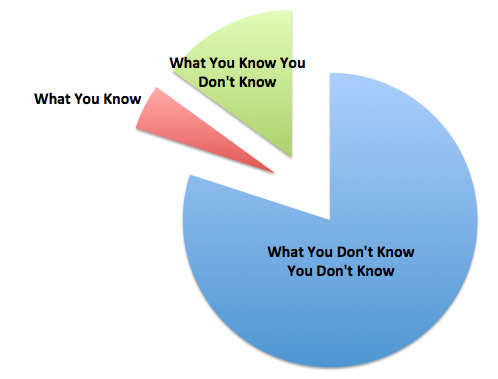
image source: steemit.com
Well, the Google user discovery helps people with the “stuff you don’t know you don’t know”.
It’s easy to search for a topic or subject you can name, but what about concepts, terms related to your topic of choice that you can’t name?
The name of a physical phenomenon or a movie. It’s like Shazam for music: when you come across a piece of song and you don’t remember its title or the name of the singer who performs it.
In recent months, Google increased its shift from being a search engine to a discovery engine.
Here is Eric’s explanation of the Google discovery engine:
Traditionally a search engine provides the user with a large number of links to web pages that might satisfy the user’s query. A discovery engine is more about helping users to find or explore things that they may not have been explicitly searching for, but which have a good chance of being of interest to the user.
The discovery engine relies on neural matching which is an AI method that connects words to concepts.
Google says neural matching impacts 30% of the queries. That is why we see search results that don’t include the phrase of the query but are related to it.
Discovery is not query-based; discovery is all about a journey–a user journey–while search is the quest for a single best answer. Winning businesses in the future will be high performers in both search and discovery.
Eric Enge
Join the Conversation
We’d love to hear what you have to say.
Get in touch with us on Facebook Group and Twitter.
Upgrading Our Cities With Smart Street Furniture

We rely on our smartphone to stay connected with friends, family and the world; we watch movies and browse the internet on a smart TV; we check the time but also the latest emails on a smartwatch. Everything around us is getting smart!
In a previous article, I wrote about the 5G technology and how it has the power to transform our cities into smart cities.
We are not there yet, but here is the first step towards the future: smart street furniture.

linkedin.com
Include is a European hardware company producing smart street furniture. The company’s R&D team works on the development of both hardware and software solutions, which means they have the capacity to develop any IoT or solar powered solution for smart cities.

Steora, the smart bench/include.eu
Mission
We believe that technology is a driver of equality and inclusion. Our mission is to find undiscovered potential around us, and use it to create amazing technology products, designed to improve the lives of urban users.
Include
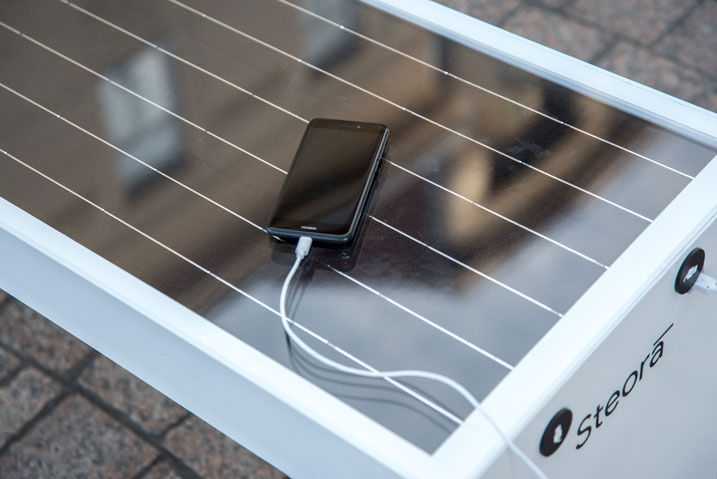
include.eu
Steora – The Smart Bench
With its simple, balanced design and convenient size, Steora can be installed to substitute regular street benches, bringing a touch of modern aesthetic to outdoor spaces together with solar-powered Wi-Fi hotspot and charging stations.
Technical specifications of Steora:
- Fitted with Photovoltaic modules;
- Wireless charging;
- Battery pack capacity: 72Ah;
- USB charging: 2 ports;
- Internet technology: 4G LTE / Speed: up to 150Mbps / Range: 4 – 20 meters;
- Various sensors: temperature, humidity, Energy production & consumption, Internet connections counter & data traffic usage, Battery status, Rain sensor – powers the bench off in case of heavy rain, System sensor – analyzes every device inside the bench;
- Cooling system;
- Ambient light: 2 meters range;
- LCD display;
- CCTV.

include.eu
Benefits of Steora, the smart bench:
- self-sustaining green solar energy;
- wireless charging;
- superfast internet connection;
- outdoor advertising;
- area lighting;
- seat cooling.
Include by the numbers
- The company was founded in 2014 by Ivan Mrvoš, a young Croatian innovator;
- The first smart bench was launched in 2015 and sold almost 100 units in the first year;
- To date, the company sold over 1000 benches in 42 markets around the world.
Awards
For its innovative products, the company was awarded the StartUp of The Year, Best Smart City Solution and Best IoT Solution at the 2017 Central European Startup Awards.
Forbes 30 under 30 included Ivan Mrvoš on its 2019 Europe list at the Manufacturing & Industry category.
Join the Conversation
We’d love to hear what you have to say.
Get in touch with us on Facebook Group and Twitter.
BRAND MINDS – Here’s What Attendees Say About Our Conference
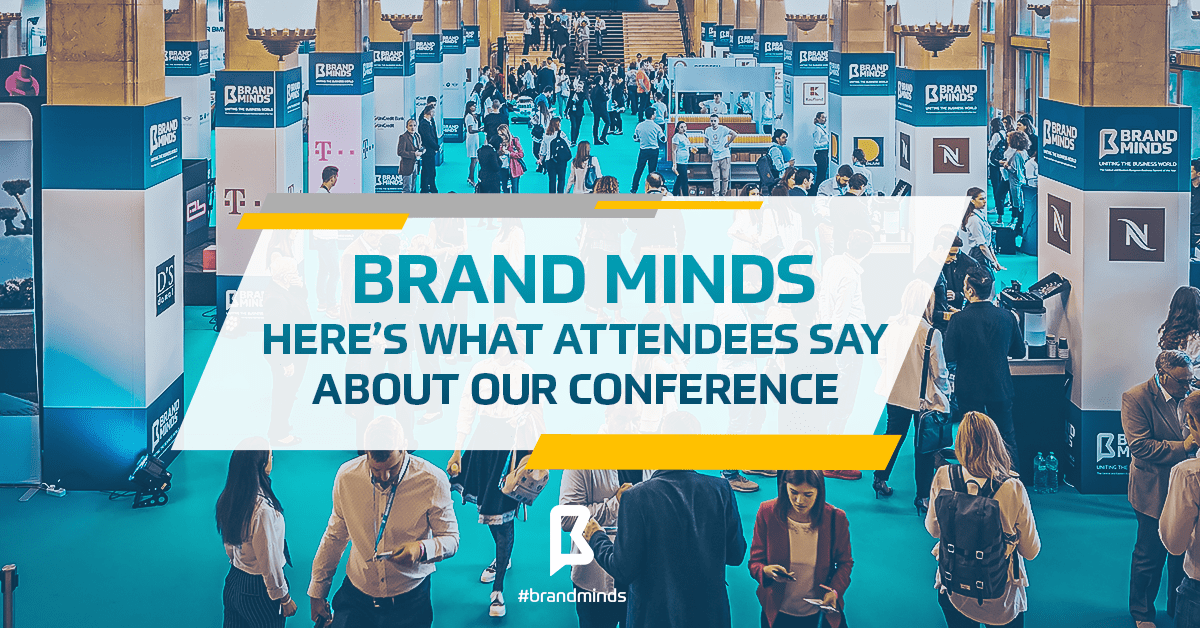
Organizing big events is a lot like delivering artistic performance: you’re as good as your last.
After each BRAND MINDS edition, we look forward to receiving feedback and reviews from our attendees.
We are particularly looking for answers to these three essential questions which tell us if our event was successful:
Did the attendees find the content useful?
Did they enjoy the speakers?
Would they return for the next edition?
If attendees answer Yes to all of them, we can rest assured we did a good job at delivering a great conference and we can start preparing for the next edition. Coming up with ways to make the next event better and more impactful is a thought that is always on our minds.
Here are some of the reviews following the 2018 BRAND MINDS edition grouped in 4 categories:
1. Amazing speakers delivering great content
Bringing speakers who deliver relevant content is paramount to a successful event. The BRAND MINDS team is always looking for reputable speakers, carefully selecting those who provide relevant and fresh knowledge for our audience.
Providing good content to our attendees is one of our goals. But we don’t settle for good – our audience deserves the best content available today.
![]()
It was the best business conference I’ve attended in the past three years. Great, great content!
Anthony (Ukraine)
![]()
The speakers over-delivered. Period. I joined the 2017 edition as well and the content remains the spicy ingredient that keeps you focused on BRAND MINDS.
Alexandra (Romania)
![]()
Great speakers, brilliant ideas and a lot of notes written.
Laura (Romania)
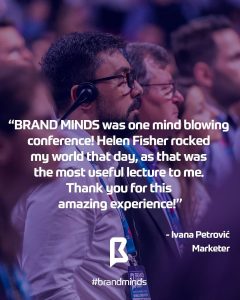
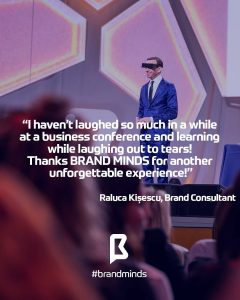
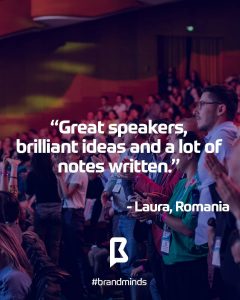
2. A Life-Changing Experience
Time is precious. No one has time to waste these days. Our attendees spend more than six hours with us – we take that very seriously.
Together with our event partners, we go to great lengths to make sure the audience attending our conference has the kind of experience that will be remembered.
![]()
Speechless experience! I’m looking forward to 2019’s edition.
Ida (Hungary)
![]()
The energy and the overall vibe was amazing! BRAND MINDS is definitely a great opportunity for exclusive networking.
Anna (Bulgaria)
![]()
I encourage everyone to join BRAND MINDS next year, but if you can get the VIP experience, do it! Meeting the speakers in private is priceless!
Andreea (Romania)
![]()
It was electrifying! A hall of 3000 people who gather for the same reason is the type of experience you don’t get every day. It really gives you the feeling that you CAN change the world!
Nina (Bulgaria)

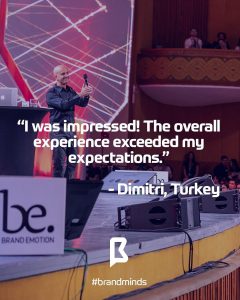
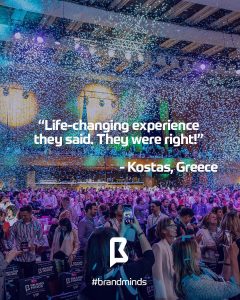
3. Looking forward to the next edition while raising the industry’s standards
There’s no greater satisfaction than receiving this particular reaction from our audience! When our attendees state they will join us for the next edition of BRAND MINDS, we feel proud and utterly happy.
Returning attendees is what every event organizer dreams of! It’s a powerful feeling – one that motivates us to keep our audience’s loyalty and exceed its expectations.
At each edition, we work hard to improve the BRAND MINDS experience for everyone in the audience. So when our attendees tell us our conference serves as the industry standard, we are humbled and we feel a greater responsibility to meet and exceed their expectations.
![]()
This is my 3rd year at BRAND MINDS and I still get surprised after each edition!
George (Romania)
![]()
We’re definitely coming back next year!
Martina Andelkovic
![]()
A room with some of the greatest masterminds of marketing & life, genius business pioneers and brilliant performers. On top of that, a vibrant experience that I wish to repeat.
Cosmin (Romania)
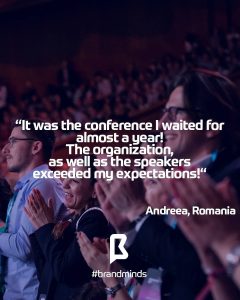

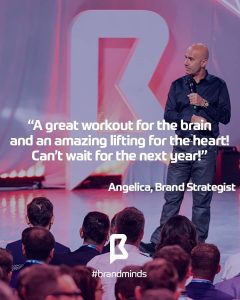
4. Inspirational, impactful and a great place for business networking
Great leaders lead through inspiration, personal example and mentorship.
We believe leadership is a skill anyone can master and BRAND MINDS is the perfect place to start learning.
![]()
I left from BRAND MINDS with a large perspective and a clear vision for what I plan to achieve in the next 5 years.
Mykyta (Ukraine)
![]()
It was mind-blowing hearing the incredible speakers, realising what I can do to improve my business and life. All of that, plus the amazing organization resulted in a day I will never forget.
Matija, entrepreneur (Croatia)
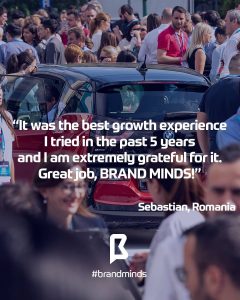
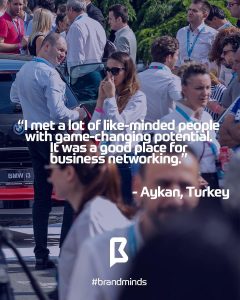

I hope this article helped you gain a wider perspective on our conference.
Looking forward to seeing you at BRAND MINDS!
Join the Conversation
We’d love to hear what you have to say.
Get in touch with us on Facebook Group and Twitter.
Henrik Hagemann (CustoMem) – Cleaning Wastewaters With An Innovative Solution
Cleaning wastewater is essential but challenging. Wastewater operations are inefficient and unsustainable. They require excessive energy consumption, their operating costs are high and they contribute to global warming through generating harmful greenhouse gas emissions. According to reports, global carbon dioxide (CO2) emissions have increased by almost 50% since 1990 (source: wateronline.com).
That’s where Henrik Hagemann, co-founder and CEO at CustoMem wants to make a difference. Together with Ben Reeve and Gabriella Santosa, Henrik founded CustoMem in 2011 with the purpose of designing sustainable solutions to clean wastewaters.

Henrik Hagemann / linkedin.com
Currently, the world is confronted with the following facts: water scarcity is increasing and more than half the world’s population live in urban areas. As you can see, the importance of treating and understanding the value of wastewater has never been greater.
CustoMem designs and manufactures biologically derived materials for industrial water treatment. Through a low-energy, low-cost biological process, CustoMem produces a novel biomaterial composite that can selectively capture micropollutants including pesticides, pharmaceuticals and high-performance chemicals.
To honour his accomplishments, Henrik was included in 2019 Forbes 30 under 30 Europe and in 2018 he received Innovators under 35 Europe (2018) award by MIT Technology Review.
Looking to know more about Henrik, I invited him to share his story.
1. Your company is about protecting global environmental & human health by engineering bio-based materials to capture target chemicals. When did environmental protection become one of your interests?
I’ve grown up on the Danish countryside with my childhood home neighbouring forest and fields on all sides. My favourite pastime was venturing into the forest and exploring our nearby wetlands and river.
This evolved into an environmental curiosity, which resulted in long-distance cycling trips like the Silk Route and now building a venture that exponentially reduces the discharge of high impact industrial chemicals.
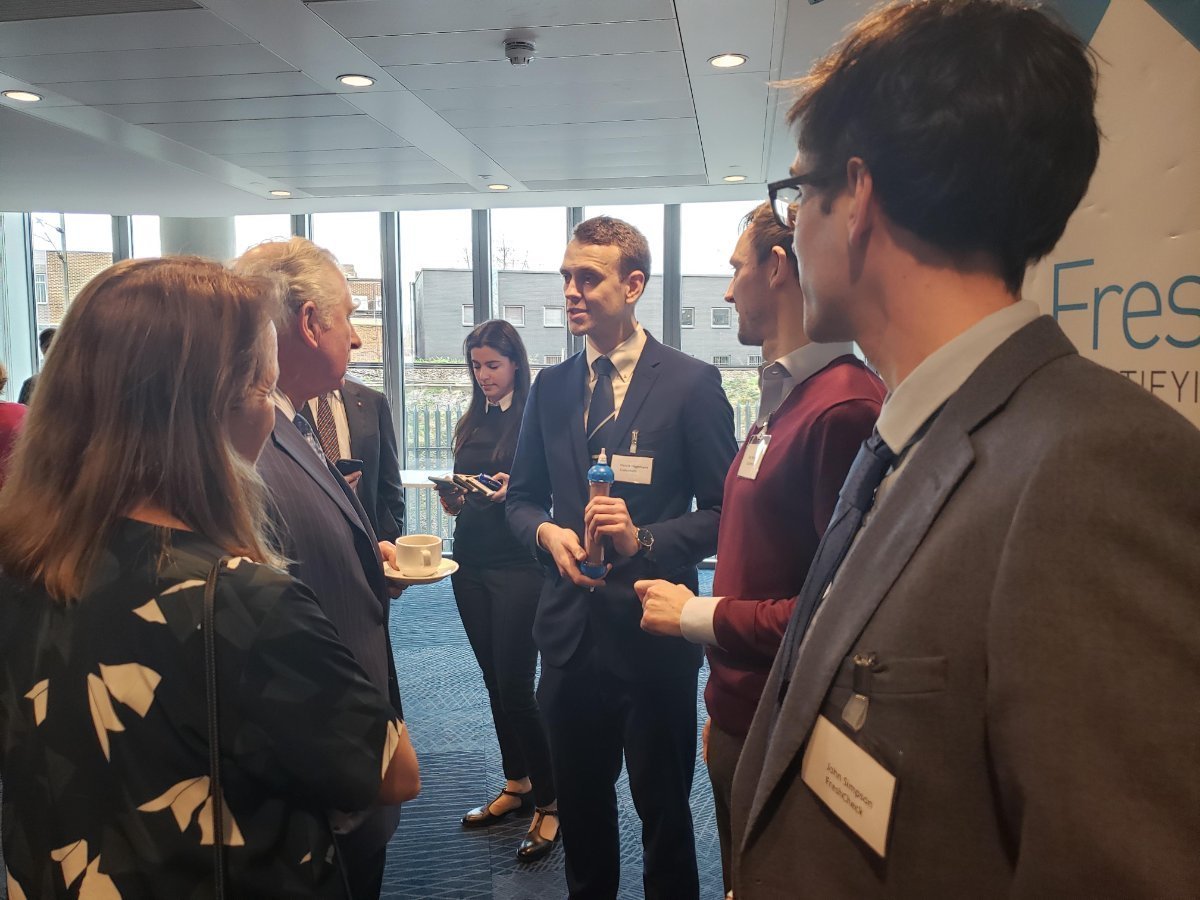
Henrik Hagemann & Ben Reeve sharing about CustoMem Granular Media (CGM) with HRH The Prince of Wales / customem.com
2. What challenges did you encounter while developing the CustoMem adsorbent material?
Huge scientific challenges!
We’re targeting the most resistant industrial chemicals. In the first case, this involves us “sticking” (adsorbing) the most non-stick chemical in the world, fluorinated substances called PFAS. PFAS is what makes Teflon pans non-stick.
Lots of additional challenges appear, including how PFAS contain one of the most stable bonds in the world, come in 4700+ slight variants, require advanced H&S facilities as it is toxic at extremely low quantities and detecting it in one water sample easily costs $350.
Seeing a world-class team come together to tackle such a scientifically hard problem alongside generic startup challenges is truly inspirational. I guess it’s also no wonder more than half of the team have a PhD.

CustoMem wins Technology Business of the Year 2019 at the 6th annual West London Business Award / customem.com
3. What is your vision of the future?
I envision a future where we engineer biomaterials to tackle global challenges with a scalable profitable approach.
As the first step to this vision, my vision is one of CustoMem as the market leading solution for treatment of highly toxic industrial chemicals with guaranteed destruction or closed loop reuse of the chemicals. I want us to effectively demonstrate the business case for protecting environmental and public health.

image source: shell-livewire.org
Join the Conversation
We’d love to hear what you have to say.
Get in touch with us on Facebook Group and Twitter.
8 Marketing Trends Every Marketer Should Know About (2 of 2)
The present article is delivered in two parts. Read part 1 to discover the first four marketing trends: slow marketing, people-based marketing, emotional marketing and empathy-based marketing.
If you’ve read the first part (I hope you have!), let’s continue with the final 4 marketing trends.
5. Neuromarketing
Neuromarketing is the application of neuroscience to marketing. Neuromarketing includes the direct use of brain imaging, scanning, or other brain activity measurement technology to measure a subject’s response to specific products, packaging, advertising, or other marketing elements. In some cases, the brain responses measured by these techniques may not be consciously perceived by the subject; hence, this data may be more revealing than self-reporting on surveys, in focus groups, etc.
Traditional marketing relies on quizzes, interviews and focus groups to discover whether their customers liked or disliked their products in terms of packaging, colours, imagery, functionality etc.
The problem with this method of gathering information is that people are easily influenced by uncorrelated factors: the weather, their emotional state, whether they are relaxed or stressed and so on. This means the results are distorted and unreliable more often than not.
With neuromarketing, marketers gain knowledge and insights into the brain’s subconscious reactions.
![]()
The brain’s responses to marketing stimuli are true and reliable because they are objective. That is why we see many ads featuring giggling babies, smiling people and beautiful individuals. These visuals trigger positive reactions: they are designed to attract and maintain the viewer’s attention long enough to establish brand awareness and finally, sales.
Brands also use neuromarketing strategies to set prices, decide on brand colours and website layout, build marketing campaigns on the psychological principles of influence and persuasion etc.
Learn more about the principles of influence and persuasion: 6 Psychological Ways to Increase your Event Registration.
6. Mindful Marketing
It’s common knowledge that early humans lived off their land by practising agriculture and hunting. Whatever they weren’t able to supply for themselves in terms of food or other items necessary in every household, they obtained by exchanging produce and various items with others. It’s called barter.
With the evolution of our society, the barter was replaced by producing or manufacturing goods with the purpose of selling them for money. Enter marketing.
As you can see in my short description above, the history of marketing starts early as a part of our own history of human evolution.
One of the first definitions of marketing, in the late 1800s, states that marketing is the process of moving goods from producer to consumer with an emphasis on sales and advertising. It’s marketing 1.0: product-centred and overall seen as an integral part of a business.
In the 1950s, Philip Kottler, one of the world’s leading authorities on marketing defines marketing as follows:
The science and art of exploring, creating, and delivering value to satisfy the needs of a target market at a profit. Marketing identifies unfulfilled needs and desires. It defines, measures and quantifies the size of the identified market and the profit potential. It pinpoints which segments the company is capable of serving best and it designs and promotes the appropriate products and services.
This definition shifts the attention from the product to the customer as a target market; it speaks of needs and desires while maximising profit for the company. It’s marketing 2.0 where marketing is less product-centred and more customer-focused; marketing remains inside the business industry but acquires elements of social science.
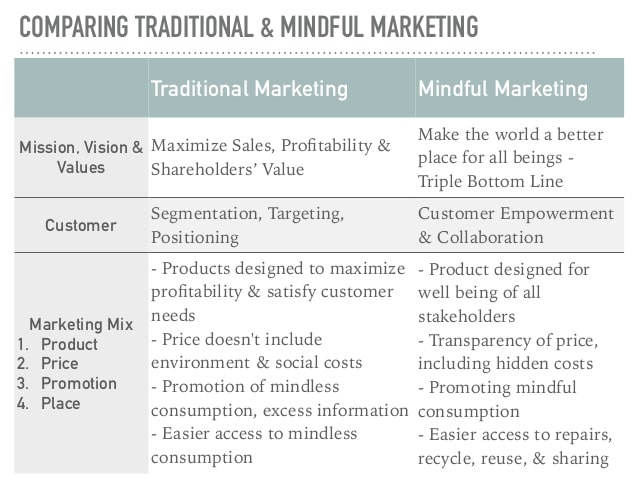
image source: slideshare.net/ShaliniBahl
Some experts say we are now in stage 3.0: the stage of the mindful marketing.
What is mindful marketing?
While researching for this trend, I found the following quote of Casey Sheahan, former CEO at Patagonia, the American clothing company:
We want people to look at their own lives and live in an examined way and again question whether you really just want that product or do you really need it because it’s cold this winter.
That’s what mindful marketing is all about: companies inviting their customers to consume mindfully instead of mindlessly. These companies are aware of their impact on the environment, our society and our world at large and strive to reduce or undo the damages.
Mindful marketing is human and values-centred.
Here are some of the most important features of mindful marketing:

source: slideshare.net/ShaliniBahl
Can you think of any mindful marketing campaigns?
7. Omnichannel Marketing
We are in the age of technology. The pervasiveness of technology has influenced our society and our lives at great length. I cannot think of any industry that hasn’t undergone changes in recent years due to tech developments.
Retail is one of the industries which learned a painful lesson that said: Adapt or die.
The way customers purchase products and the way companies market and sell their products also changed profoundly.
Omni-channel marketing seamlessly integrates the different communication channels that businesses use to communicate with customers. This approach uses the customers’ perspectives and interests to optimize the consistency of the company’s marketing messages. By uniting the strengths of each communication channel, marketing teams can use omnichannel marketing to deliver a more consistent and effective brand message.”
Retail companies communicate with their audience on multiple channels: company website, social media accounts, traditional and digital advertising, messaging platforms, apps etc.
While companies can be found on various mediums, no customer wants to jump from one space to another to complete their purchase.
That’s why Sephora customers can browse products in the company’s e-store and make purchases inside Messenger with the help of a bot.
Another example is Nike inviting sneakerheads to experience an innovative way to purchase its Momofuku shoes using AR and geolocation technology.
In both examples, customers enjoyed a seamless purchase experience.
Learn more: Retail Trends For 2019
8. Content Shock
Content shock is a term coined by Mark Schaefer in his 2014 blog article: Content Shock: Why content marketing is not a sustainable strategy.
In his article, Mark Schaefer states that the volume of content available on the internet is increasing exponentially.
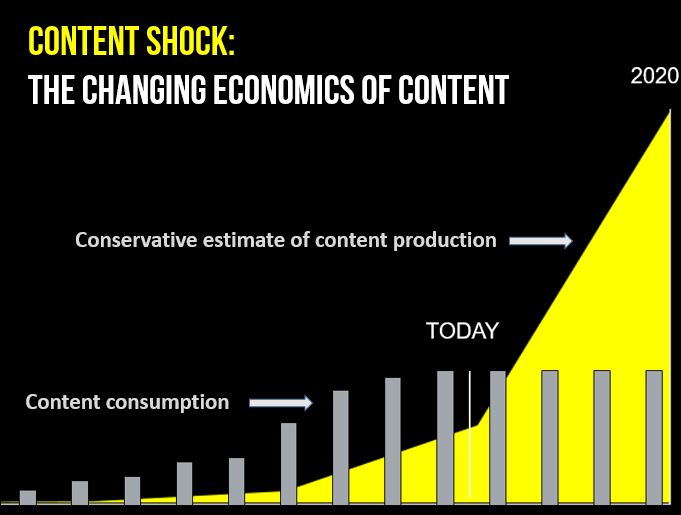
image source: businessesgrow.com
He predicts that the amount of information on the web will increase by 500% in the next five years. Yet our capacity to consume it is limited. How many hours a day can we dedicate to consuming content? Three hours? Ten hours?
In economic terms: the demand and supply forces in content marketing are so terribly out of balance that the situation will lead to content shock.
Content Shock:
The emerging marketing epoch defined when exponentially increasing volumes of content intersect our limited human capacity to consume it.
Mark Schaefer
At the time, the content shock concept was received by the content marketing industry as a novel idea and concept.
His article attracted an amazing amount of media attention which spun over a period of three weeks.
Content Shock: Winners and Losers
Limited attention and increased volume of content mean more options for customers to choose from. Do more options also mean better options? Only the customers can tell.
From the perspective of a company, the content shock means a real danger of slipping into oblivion buried under terabytes of content.
You might think the solution is this:
Companies can avoid content shock if the content they produce is of real value to their customer base. As Mark mentioned in a recent Medium article: no, the problem is not too much bad content; the problem is too much good content.
So how can companies avoid getting caught in content shock? Instead of struggling to ride the wave, be the one raising it!
According to Mark, the answer lays in content niches.
Here is what Mark Schaefer recommends:
- Find an unsaturated content niche;
- Rapidly fill that niche with helpful, high-quality content;
- Keep producing content in that topical niche that is relevant, consistent, and superior.
Wrap up
Marketing has come a long way since the 1950s, there’s no doubt about it. Technology developments are responsible for numerous changes within the industry: the internet boom in the early 90s, personal computers in every home, search engines, mobile phones and smartphones for everyone, communicating through texting and messaging, social media, bots, AI, VR and AR. People have changed in the last decade so brands had to follow.
In these two articles, I’ve gone through all 8 marketing trends: slow marketing, people-based marketing, emotional marketing, empathy-based marketing, neuromarketing, mindful marketing, omnichannel marketing and content shock. What is the red thin line across all of them? Neither the brand nor the product lies at the core of any one of these trends, it’s the individual.
I hope the information laid out here was helpful. My purpose was not to go in deep but to provide you with enough information to inspire further research.
Do you know of other marketing trends I haven’t mentioned here?
Let me know!
The Circle of Safety – Simon Sinek’s Rule For Great Leadership
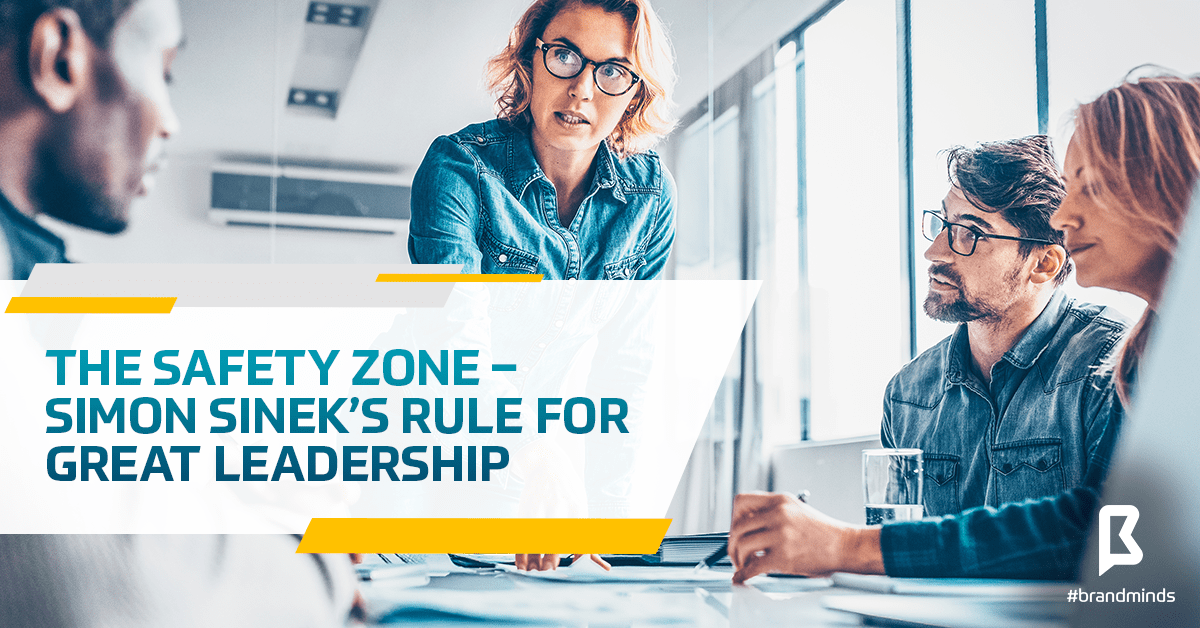
Simon Sinek – Leaders Eat Last
I recently finished Simon Sinek’s book Leaders Eat Last. It took me one hour each day for seven days to read it; it took Simon twelve months to write it. In Acknowledgements, in the last chapter of his book, Simon mentions working fourteen hours a day for many days on end. He did extensive research on the subject, talked to many people, he flew to Afghanistan and interviewed commanders in the American Air Force and the American Navy, where great leadership makes the difference between life and death.
Learn more: Simon Sinek – 8 Things You Didn’t Know About Him
Simon is a cultural anthropologist by training and it shows extensively in his book. Cultural anthropology is in my top three most interesting topics so you can imagine my enthusiasm – I couldn’t put the book down. But don’t worry, there is no scientific jargon. Simon’s writing flows effortlessly and it is easy to understand. It’s a great book and if you haven’t read it yet, I highly recommend you do so as soon as possible.
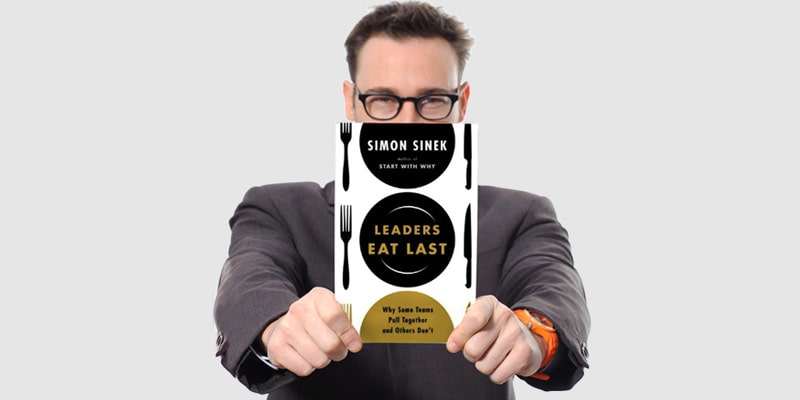
image source: trulyhumanleadership.com
Leaders Eat Last is a book on leadership; what makes it stand out from other books on the same topic is the author’s approach.
Simon Sinek takes a fresh and original approach to leadership – he looks at leadership through the lens of cultural anthropology. What makes the book very interesting is that his observations are supported by real-life business case studies.
It’s not the purpose of this article to review the book but to introduce you to one of Simon Sinek’s concepts –
The Circle of Safety.
What is The Circle of Safety?
The goal of great leadership is to inspire employees to deliver their best work and support the organisation to become successful. Notice I didn’t use the verb manage because employees don’t expect to be managed – they expect to be inspired.

What are leaders required to do to achieve this goal?
All they need to do, according to Simon Sinek is implement The Circle of Safety in their organisation.
First, let’s establish what a successful organisation is. Here is Simon Sinek’s definition of the successful organisation:
A successful organisation overtakes its competitors through innovation, inspires respect both inside and outside, has the highest level of loyalty among its employees, the highest retention rate and has the ability to overcome any challenges that may arise.
Second, in regard to the concept of safety, Simon notes the following: safety goes both ways in that the leader ensures the safety of his employees and in turn, the employees ensure the safety of the organisation.
Having said that, let’s delve into The Circle of Safety concept and discover how it serves and supports great leadership.
Leaders have one job only: to create a company culture in which employees cooperate naturally towards growing the business. That’s the safety zone: when employees come to work not for the company, but for themselves and their colleagues.
Learn more: Keeping Your Employees Happy Is More Than A Higher Paycheck
Trust the leaders, trust the employees
How do leaders create this type of company culture? By earning their employees’ trust.
The trust between the organisation and its employees is essential. To earn their employees’ trust, leaders must first empower them.

When you work with people you trust they will do their job better in order to deserve and keep your trust. These employees will show loyalty and commitment to the organisation without the need for exterior incentives like promises, financial bonuses or other perks.
When people feel appreciated by the organisation, they feel safe and relaxed; this allows them to care about and connect with their colleagues and start working as a team to support the organisation achieve success and prosperity.
Protection from outside threats
Trust means employees feel protected from threats coming from inside the organisation.
When there are no layoff threats looming over them or workplace rivalries they must fight in order to survive, employees are more prepared to protect the company from outside threats. Internal rivalries lead to the weakening of the company, making it less capable of standing up to potential dangers.

People first, revenues second
Leaders must make employees their top priority, not company sales or revenues. No financial goal should take precedence over the people. In times of business crises, Simon supports the strategy of sacrificing financial vectors to save the employees- not the other way around.
Unlike the threats from outside the company which are not in our control, leaders can control the threats from inside the organisation.
They can take steps towards eliminating intimidation, humiliation, biased attitudes, isolation, feeling useless, feeling rejected and being stressed. Workplace stress and anxiety have very serious consequences on our health and well-being- there’s no doubt about it. Statistics report a direct link between a negative workplace and a wide range of illnesses: from physical and mental fatigue to obesity, heart disease, burnout and eventually death. Increasing levels of detachment among employees are also causing low retention and engagement rates.

Lynda Gratton will teach you how to keep your employees engaged and motivated to do great work. Get your tickets today!
No safety zone means a dangerous environment for the organisation
When the organisation doesn’t provide a safety zone for its people, various case studies of prominent companies showed that it gives rise to negative feelings like paranoia, cynicism and employees with personal agendas. In short: a dog-eat-dog kind of culture where arrogance, inflating egos and fear make the rules.
When employees are left to fend for themselves, they withhold valuable information regarding an imminent threat to the organisation. The relationships between employees and leaders are weak and everyone seeks to satisfy their own interests. That’s what happened to Nokia. Nokia’s culture of status, shared fear and temporal myopia contributed to its downfall.
Leaders can fight negativity by creating a powerful culture based on a transparent set of values and beliefs. In this culture, employees are given the power to make decisions on their own because their leaders have previously shown trust and empathy. Which means building the safety zone.

A safe environment breeds innovation
It’s the natural cooperation between employees that makes the company powerful and resilient, not their products or services.
When people believe that everyone else inside the company will take care of them, they will contribute to the free exchange of information and data.
Sharing knowledge and information is what great leadership is all about
In a safe organisation, the leader is willing to share knowledge and information just as much as the next employee. Actually, it’s the leader who sets the tone and takes the first step down the path of sharing valuable information.
Numerous case studies and research data report that a favourable working environment leads to organisational stability and long-term high-level performances.
We also maintain our loyalty towards the employer, we help each other and we take pride in our work doing our jobs with passion.

A leader’s role is to set the tone
A leader’s role is to be the first who throws himself in front of danger to protect the group.
When the safety zone is in place, this doesn’t happen because it doesn’t have to. The safety zone protects him and the organisation. His people protect the company from outside dangers so the situation in which he has to sacrifice himself doesn’t arise at all.
The true social benefit of trust is reciprocity. Trust feeds itself. The organisation supports the development and growth of its employees in order for them to take on more important responsibilities.

A leader’s job is to teach and mentor his employees into becoming more competent and to earn their trust.
If the organisation doesn’t trust its people, it will monitor and surveil them, it will time their bathroom breaks and phone conversations.
Leaders rely on employees to provide firsthand information and data and employees rely on their leaders to provide direction, guidance and safety.
Join BRAND MINDS 2023 and learn how to become a better leader from global business thinkers James Clear, Nassim Taleb, Lynda Gratton, Neil Patel, Renee Mauborgne, Blair Singer, Anne-Marie Imafidon and Duncan Wardle!
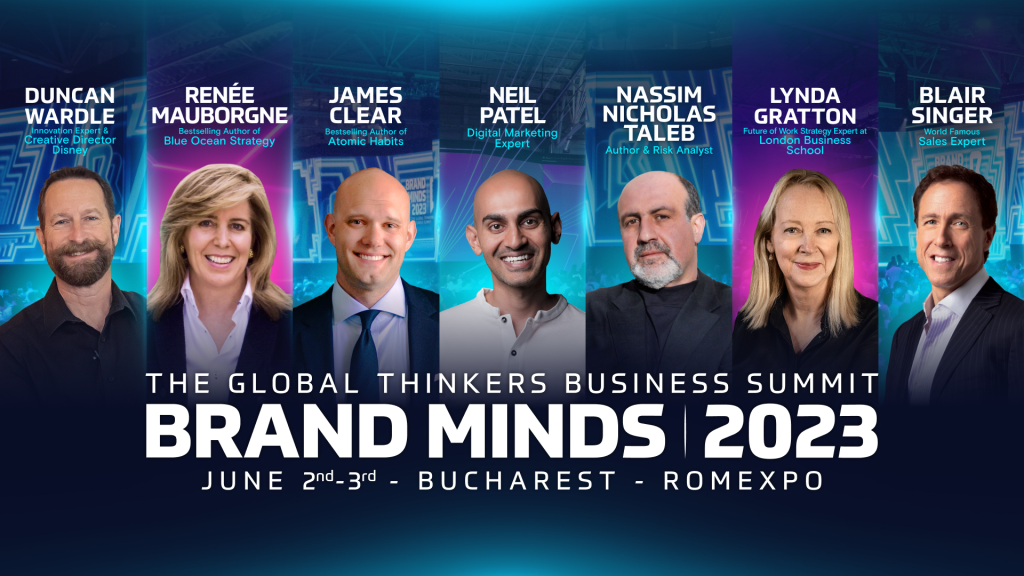
Unconditional Love vs Unconditional Relationships
Loving and being loved unconditionally is a wonderful feeling, but building unconditional relationships is unhealthy.
Love is a powerful emotion. Apart from the usual ingredients which make breathing and living possible, love is a contributing element to our mental and physical well-being.

We need love to grow
Research has shown that when infants are born into an environment lacking in love, emotional warmth, and physical contact, the growth of their brain is hugely affected. To grow into healthy adults, we need love from the moment we enter this world.
A mother’s love is unconditional
The first person we ever receive love from is our mother. Although newborns cannot reciprocate love, the bond between the mother and her newborn child is the most powerful in the world.
If you are scientifically inclined, know that love is directly linked to oxytocin, also called the bonding hormone. Love is nature’s way to ensure the newborn baby is cared for and protected thus ensuring the perpetuation of humankind as a species.

Unconditional love is for babies and pets
It’s natural and healthy to receive unconditional love from your mother. When we become parents, we love our babies to the moon and back and we do everything in our power to protect them from harm.
But as adults, is it healthy to offer and expect unconditional love from your romantic partners?
I believe unconditional love is for babies and pets.
When it comes to grown-ups loving each other their love should be based on mutual respect and consideration, healthy boundaries and behaviours, standards and values. These are the makings of a healthy love relationship. It’s actually how any relationship between grown-ups should be no matter who they are: friends, co-workers, business partners etc.
Believing that you should allow any kind of behaviour or attitude from your romantic partner on account of your unconditional love for them is dangerous. It’s a get out of jail free card and you run the risk of your partner using this card with negative consequences for you.
Should your romantic partner hurt you emotionally or physically, do you still love him/her?
Should he/she treat you badly and make you feel unworthy, do you still love him/her?

Unconditional love and unconditional relationships – a necessary distinction
Dr Jeremy Nicholson makes an interesting distinction between unconditional love and unconditional relationships.
He says it’s wonderful when we find someone who loves us for who we are, “warts and all”. But we shouldn’t apply a “no conditions” clause to relationships.
Love is a feeling while relationships involve thoughts, reasons, and decisions.
As a result, love (feelings) and relationships (decisions) can have separate rules and expectations. Love, because it is a feeling, can be unconditional. Sometimes, no matter what a partner does, feelings toward them do not change. Relationships, however, are working partnerships. As such, they require conditions, boundaries, limits, and directions to run smoothly.
Therefore, a distinction must be made between “unconditional love”…and “unconditional relationships”.

In a healthy relationship, partners refrain from making decisions based on their feelings of love alone.
Loving your partner unconditionally is natural but accepting your partner unconditionally is toxic.
When the relationship has negative consequences on your wellbeing and your life, make sure that whatever decision you make, it is based on reason, not love.
Join the Conversation
We’d love to hear what you have to say.
Get in touch with us on Facebook Group and Twitter.



